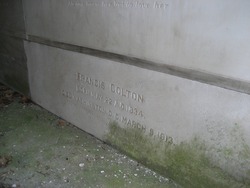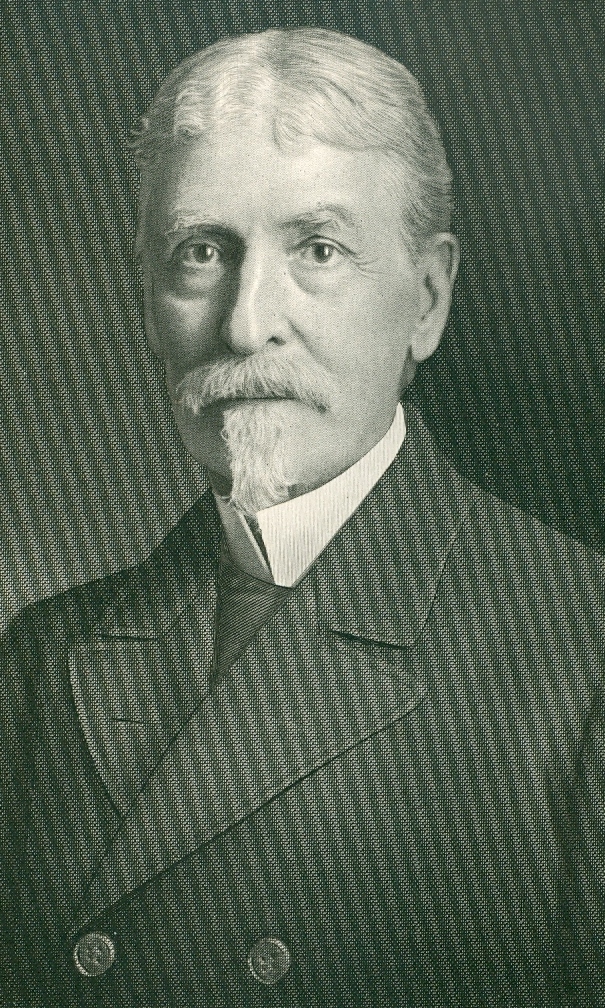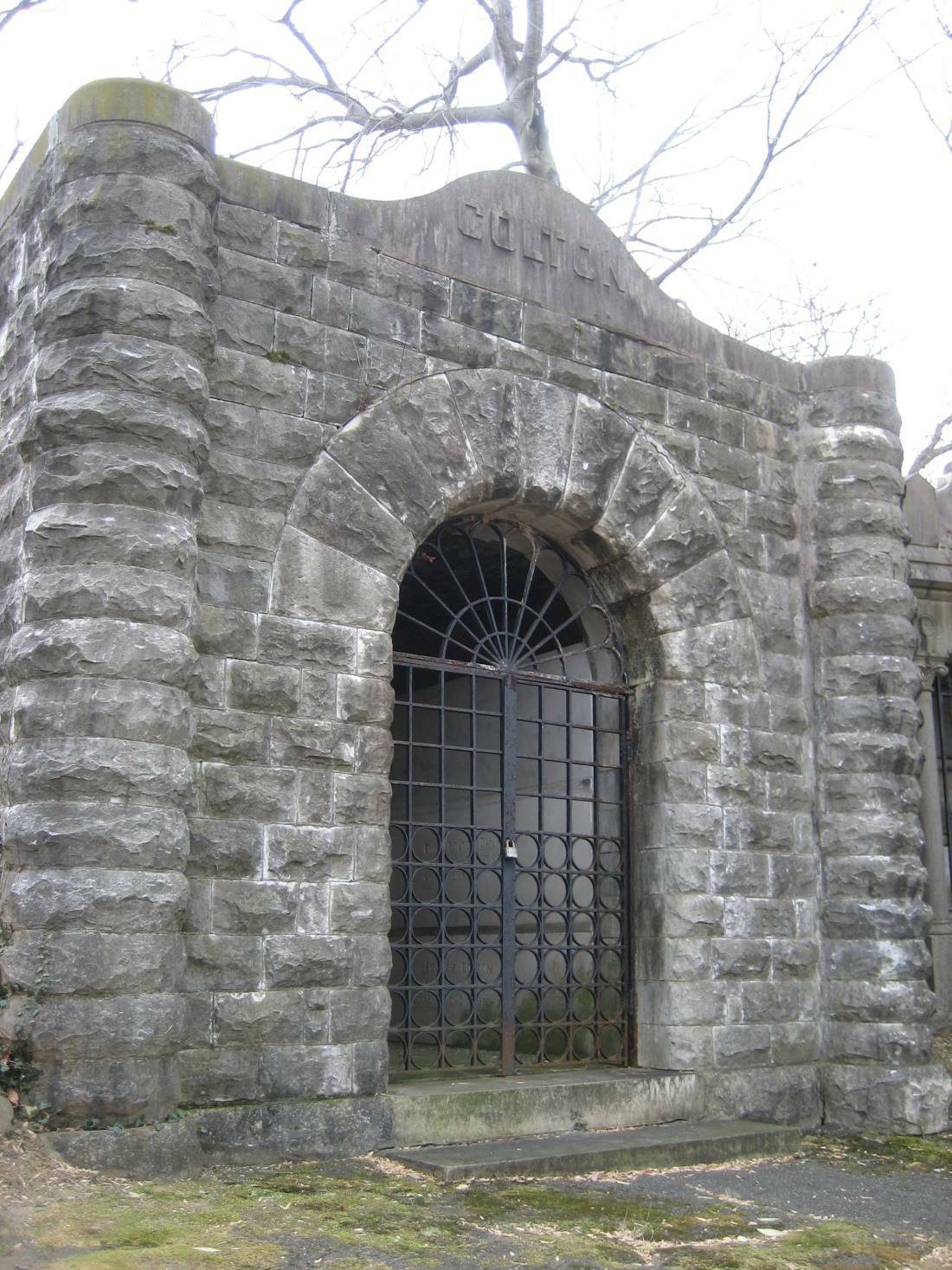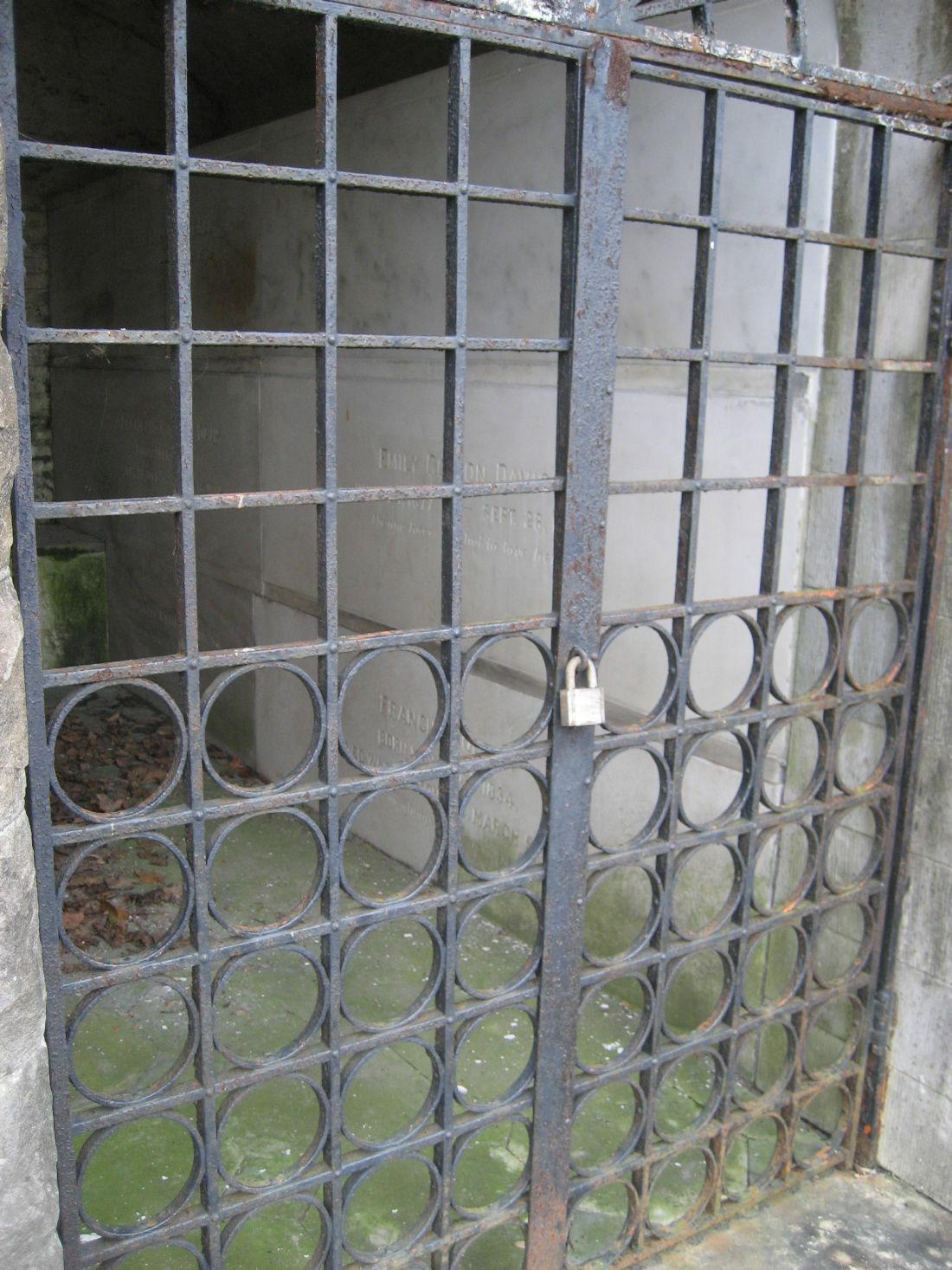The Washington Post
Wednesday, March 12, 1913
Funeral Of Francis Colton
Body Is Placed in Vault to Await the Arrival of His Son
Funeral services for Francis Colton, father of the governor of Porto Rico and formerly a prominent figure in railroad circles were held yesterday afternoon at the family residence, 1635 Connecticut Avenue Northwest. The Rev. Roland Cotton Smith of St. John's Protestant Episcopal Church officiated and the body was placed in a vault at Oak Hill Cemetery to await the arrival of his son, who is on his way from Porto Rico. The honorary pallbearers were former Senator Cullom, Brigadier General George W. Davis, Nathaniel Wilson, Brigadier General Schwan, Rear Admiral Kimball, Crammond Kennedy, Colonel L.P. Seibert, Colonel Hillery Herbert, Rear Admiral Harmony and Dr. Chatard.
The History of Knox County 1912, S.J. Clarke Publishing Co.
Francis Colton
To place a specific value upon the labors of the Hon. Francis Colton is impossible and yet there is no individual that has not been at least indirectly benefited by his life work. Moreover, in the consular service of the nation his course reflected credit and honor upon the country he represented. Capable of solving important and intricate problems, he at all times has been actuated by a patriotic devotion to his native land and his work in behalf thereof has ever been of a practical and resultant character that furthered American interests and promoted the high standing of this country among Europeans.
While Mr. Colton made Galesburg his home during the greater part of the time spent in this country he was born in Monson, Maine, May 22, 1834, his parents being Chauncey Sill and Emily (Hamilton) Colton, who removed with their family from New England to Galesburg in 1836. The progenitor of the Colton family in the new world was Quartermaster George Colton, an officer of the English army and descended from an old family of England. Quartermaster George, as he was known during his life and since, was the first settler of Long Meadow, now a suburb of Springfield, Massachusetts, where he took up his abode in 1640, since which time the family has regarded that place as the ancestral home. Its cemetery is filled with monuments to different members and collateral descendants of the Colton family. Almost without exception the members of the family have held to the faith of the Congregational church.
When Chauncey S. Colton brought his family to Galesburg in 1836, Francis Colton, the youngest child, was only two years of age. The journey from New England to Illinois was an arduous undertaking with four small children and a mother who was in delicate health. It required six weeks to travel by water and stage. The only railroad in the United States at that time was a short line extending from Boston half way to New York, over which they traveled.
Francis Colton was educated in the Galesburg schools, in Knox Academy and Knox College. He was graduated from the college in 1855 when twenty-one years of age. In June, three days after his graduation, he entered business life in connection with his father and brother John, under the firm name of C.S. Colton & Sons. On the 11th of May 1864 Mr. Colton became Director and Vice President of the First National Bank and later was appointed United States Collector of Internal Revenue. From each experience and activity of life he learned the lesson therein contained and stored up his knowledge for future use. He has never faltered in the accomplishment of any purpose or task to which he seriously set himself and his entire career has therefore been characterized by progress and by successful achievement.
On the 26th of June 1857, occurred the marriage of Francis Colton and Miss Frances A. Garey, who died March 21, 1869 in Paris, France. There were two sons of that marriage but the elder, Albion Garey, who was born February 1, 1859, died August 10, 1860. The younger son, George Radcliffe, born April 10, 1865, is now governor of Porto Rico. It was in 1875 that Francis Colton was again married, his second union being with Annie C. Snively, of New York. Their children were: Emily Marian, the wife of Captain Davis of the navy; Julia Carina, deceased and Annie Marguerite.
During the Civil War Francis Colton spent two years in settling up the widely scattered business affairs of his firm and was then called to public service, being in June 1866, appointed as United States Consul to Venice, Italy to succeed William Dean Howells, the well known author, who returned to America to assume the editorship of the Atlantic Monthly Magazine. On the 24th of August 1866 Mr. Colton's resignation as director of the First National Bank of Galesburg was received and accepted and his father, C.S. Colton, was at once elected to fill the vacancy both as Director and Vice President of the bank. This change was rendered necessary because of the absence of Francis Colton occasioned by his consular service in Venice. While in that city on the Adriatic he was the correspondent of the New York Tribune, writing concerning the Unification of Italy. This was an important historic period for in the first year of his residence in Venice came the Battle Summer—the great conflict between Germany and Austria which, together with other great transformations in European history also resulted in the freedom of Venice from Austrian domination and the uniting of it to Italy. During Mr. Colton's residence abroad he opened a chapel at his consulate for American and English travelers, presided over by a Scotch Presbyterian preacher. It became the nucleus for a Protestant mission among the Venetians. Finally they purchased a Venetian palace through the liberal subscriptions of chapel attendants and other generous people in England and the United States. This palace was used for church and school purposes under the charge of the old Waldensian Protestant church of Savoy. King Victor Emmanuel issued a royal decree putting this palace property in the legal possession of the Waldensian church which is the oldest church in Europe. This royal decree is considered to have been the entering wedge which resulted in a statute allowing all Protestant churches to own property in Italy.
In 1869 Francis Colton returned to America just as the first Pacific railroad was completed, spanning the continent. He was appointed general passenger agent with headquarters in Omaha. The first year in office Mr. Colton attended a railway convention in Chicago in which all of the railroads of the country were represented. He introduced a measure for through tickets and reduced rates. The railroad people at first were strongly opposed to the scheme but Mr. Colton carried his motion on the last day of the session, after a week's contest.
This was the beginning of reduced through passenger tickets, a system which has grown and expanded continuously since. As a result the passenger traffic of the Pacific roads was doubled and the earnings of the other lines were largely increased. In 1871 Mr. Colton was appointed general foreign agent of the Union and Central Pacific Railways and was sent to Japan and China to turn the tea trade to San Francisco, the result of which was a greatly increased freight business for both roads and connecting lines. Fast tea trains from San Francisco to Chicago and New York could successfully compete with the all-water lines by way of the Suez canal to London and New York. Mr. Colton traveled through India and finally completed the circuit of the globe. He arranged with all the steamer and railway lines for a round-the-world ticket. This was the first of the long distance passenger tickets ever put on sale which led in time to the present extensive sale of tourist tickets to every part of the globe. When in this country or abroad he was constantly studying situations, figuring out possibilities and making preparations to meet any emergency or condition that might arise. He reasoned out logically from cause to effect and his solution of intricate and involved problems was a most accurate one. While still working in the interests of the railway companies he established a general agency in London for booking passengers to China, Australia and India by way of America, which largely increased the business of the Pacific railways and all connecting lines. During the stay in London he negotiated with all of the Atlantic steamer lines to unite with American railways in diverting the regular passenger traffic by way of the Suez canal to our new route to the Orient by way of New York and San Francisco. Each steamer company joined in instructions to their hundreds of agents all over Europe to advertise this new route by way of America, which furnished travelers with a temperate line of travel, thus avoiding the old hot route by way of the Red sea. To further emphasize this new departure in Oriental traffic Mr. Colton wrote and published a book, illustrated with pictures of American sleeping and dining cars and other attractive features of Our New Way Around the World. This was circulated from the London office of the Pacific railways and the new venture proved a success.
Mr. Colton purchased many thousands of acres of railway lands in Nebraska during this period and the investment proved a profitable one. Today these same lands in their present owners' hands are worth millions, which shows what the railway systems have done for the development and growth of the far west. In 1872 he became President of the Farmers & Mechanics Bank of Galesburg and the first year in which he had executive control and administrative direction he doubled the capital and the deposits of the bank. Its business steadily grew during the twelve years of his management and made him a prominent factor in the financial circles of his home city, second only to the prominence and importance of his labors in public connections. Mr. Colton was again called to public office when in 1876 he was appointed by the Governor of Illinois as a Commissioner to the Centennial Exhibition at Philadelphia. At the opening of the fair, he stood with the other commissioners by the side of Dom Pedro, emperor of Brazil and General Ulysses S. Grant, President of the United States, when the latter touched the button in the presence of tens of thousands of enthusiastic people and set in motion all of the machinery of that remarkable exposition, celebrating the one hundredth birthday of the American Republic. In 1884 Mr. Colton retired from active business and removed to Washington, D.C., where he now resides at 1635 Connecticut Avenue. For a quarter of a century he has been a member of the Metropolitan Club, whose membership includes the president and his cabinet, all of the foreign legations and the principal army and navy officers. Mr. Colton was fifty years of age at the time of his retirement and almost thirty years of leisure in which to enjoy those activities and interests which are most pleasurable to him have been accorded him. His life has indeed been a serviceable one of the world's work, his labors being of far-reaching value and of both national and international importance.
The Washington Post
Wednesday, March 12, 1913
Funeral Of Francis Colton
Body Is Placed in Vault to Await the Arrival of His Son
Funeral services for Francis Colton, father of the governor of Porto Rico and formerly a prominent figure in railroad circles were held yesterday afternoon at the family residence, 1635 Connecticut Avenue Northwest. The Rev. Roland Cotton Smith of St. John's Protestant Episcopal Church officiated and the body was placed in a vault at Oak Hill Cemetery to await the arrival of his son, who is on his way from Porto Rico. The honorary pallbearers were former Senator Cullom, Brigadier General George W. Davis, Nathaniel Wilson, Brigadier General Schwan, Rear Admiral Kimball, Crammond Kennedy, Colonel L.P. Seibert, Colonel Hillery Herbert, Rear Admiral Harmony and Dr. Chatard.
The History of Knox County 1912, S.J. Clarke Publishing Co.
Francis Colton
To place a specific value upon the labors of the Hon. Francis Colton is impossible and yet there is no individual that has not been at least indirectly benefited by his life work. Moreover, in the consular service of the nation his course reflected credit and honor upon the country he represented. Capable of solving important and intricate problems, he at all times has been actuated by a patriotic devotion to his native land and his work in behalf thereof has ever been of a practical and resultant character that furthered American interests and promoted the high standing of this country among Europeans.
While Mr. Colton made Galesburg his home during the greater part of the time spent in this country he was born in Monson, Maine, May 22, 1834, his parents being Chauncey Sill and Emily (Hamilton) Colton, who removed with their family from New England to Galesburg in 1836. The progenitor of the Colton family in the new world was Quartermaster George Colton, an officer of the English army and descended from an old family of England. Quartermaster George, as he was known during his life and since, was the first settler of Long Meadow, now a suburb of Springfield, Massachusetts, where he took up his abode in 1640, since which time the family has regarded that place as the ancestral home. Its cemetery is filled with monuments to different members and collateral descendants of the Colton family. Almost without exception the members of the family have held to the faith of the Congregational church.
When Chauncey S. Colton brought his family to Galesburg in 1836, Francis Colton, the youngest child, was only two years of age. The journey from New England to Illinois was an arduous undertaking with four small children and a mother who was in delicate health. It required six weeks to travel by water and stage. The only railroad in the United States at that time was a short line extending from Boston half way to New York, over which they traveled.
Francis Colton was educated in the Galesburg schools, in Knox Academy and Knox College. He was graduated from the college in 1855 when twenty-one years of age. In June, three days after his graduation, he entered business life in connection with his father and brother John, under the firm name of C.S. Colton & Sons. On the 11th of May 1864 Mr. Colton became Director and Vice President of the First National Bank and later was appointed United States Collector of Internal Revenue. From each experience and activity of life he learned the lesson therein contained and stored up his knowledge for future use. He has never faltered in the accomplishment of any purpose or task to which he seriously set himself and his entire career has therefore been characterized by progress and by successful achievement.
On the 26th of June 1857, occurred the marriage of Francis Colton and Miss Frances A. Garey, who died March 21, 1869 in Paris, France. There were two sons of that marriage but the elder, Albion Garey, who was born February 1, 1859, died August 10, 1860. The younger son, George Radcliffe, born April 10, 1865, is now governor of Porto Rico. It was in 1875 that Francis Colton was again married, his second union being with Annie C. Snively, of New York. Their children were: Emily Marian, the wife of Captain Davis of the navy; Julia Carina, deceased and Annie Marguerite.
During the Civil War Francis Colton spent two years in settling up the widely scattered business affairs of his firm and was then called to public service, being in June 1866, appointed as United States Consul to Venice, Italy to succeed William Dean Howells, the well known author, who returned to America to assume the editorship of the Atlantic Monthly Magazine. On the 24th of August 1866 Mr. Colton's resignation as director of the First National Bank of Galesburg was received and accepted and his father, C.S. Colton, was at once elected to fill the vacancy both as Director and Vice President of the bank. This change was rendered necessary because of the absence of Francis Colton occasioned by his consular service in Venice. While in that city on the Adriatic he was the correspondent of the New York Tribune, writing concerning the Unification of Italy. This was an important historic period for in the first year of his residence in Venice came the Battle Summer—the great conflict between Germany and Austria which, together with other great transformations in European history also resulted in the freedom of Venice from Austrian domination and the uniting of it to Italy. During Mr. Colton's residence abroad he opened a chapel at his consulate for American and English travelers, presided over by a Scotch Presbyterian preacher. It became the nucleus for a Protestant mission among the Venetians. Finally they purchased a Venetian palace through the liberal subscriptions of chapel attendants and other generous people in England and the United States. This palace was used for church and school purposes under the charge of the old Waldensian Protestant church of Savoy. King Victor Emmanuel issued a royal decree putting this palace property in the legal possession of the Waldensian church which is the oldest church in Europe. This royal decree is considered to have been the entering wedge which resulted in a statute allowing all Protestant churches to own property in Italy.
In 1869 Francis Colton returned to America just as the first Pacific railroad was completed, spanning the continent. He was appointed general passenger agent with headquarters in Omaha. The first year in office Mr. Colton attended a railway convention in Chicago in which all of the railroads of the country were represented. He introduced a measure for through tickets and reduced rates. The railroad people at first were strongly opposed to the scheme but Mr. Colton carried his motion on the last day of the session, after a week's contest.
This was the beginning of reduced through passenger tickets, a system which has grown and expanded continuously since. As a result the passenger traffic of the Pacific roads was doubled and the earnings of the other lines were largely increased. In 1871 Mr. Colton was appointed general foreign agent of the Union and Central Pacific Railways and was sent to Japan and China to turn the tea trade to San Francisco, the result of which was a greatly increased freight business for both roads and connecting lines. Fast tea trains from San Francisco to Chicago and New York could successfully compete with the all-water lines by way of the Suez canal to London and New York. Mr. Colton traveled through India and finally completed the circuit of the globe. He arranged with all the steamer and railway lines for a round-the-world ticket. This was the first of the long distance passenger tickets ever put on sale which led in time to the present extensive sale of tourist tickets to every part of the globe. When in this country or abroad he was constantly studying situations, figuring out possibilities and making preparations to meet any emergency or condition that might arise. He reasoned out logically from cause to effect and his solution of intricate and involved problems was a most accurate one. While still working in the interests of the railway companies he established a general agency in London for booking passengers to China, Australia and India by way of America, which largely increased the business of the Pacific railways and all connecting lines. During the stay in London he negotiated with all of the Atlantic steamer lines to unite with American railways in diverting the regular passenger traffic by way of the Suez canal to our new route to the Orient by way of New York and San Francisco. Each steamer company joined in instructions to their hundreds of agents all over Europe to advertise this new route by way of America, which furnished travelers with a temperate line of travel, thus avoiding the old hot route by way of the Red sea. To further emphasize this new departure in Oriental traffic Mr. Colton wrote and published a book, illustrated with pictures of American sleeping and dining cars and other attractive features of Our New Way Around the World. This was circulated from the London office of the Pacific railways and the new venture proved a success.
Mr. Colton purchased many thousands of acres of railway lands in Nebraska during this period and the investment proved a profitable one. Today these same lands in their present owners' hands are worth millions, which shows what the railway systems have done for the development and growth of the far west. In 1872 he became President of the Farmers & Mechanics Bank of Galesburg and the first year in which he had executive control and administrative direction he doubled the capital and the deposits of the bank. Its business steadily grew during the twelve years of his management and made him a prominent factor in the financial circles of his home city, second only to the prominence and importance of his labors in public connections. Mr. Colton was again called to public office when in 1876 he was appointed by the Governor of Illinois as a Commissioner to the Centennial Exhibition at Philadelphia. At the opening of the fair, he stood with the other commissioners by the side of Dom Pedro, emperor of Brazil and General Ulysses S. Grant, President of the United States, when the latter touched the button in the presence of tens of thousands of enthusiastic people and set in motion all of the machinery of that remarkable exposition, celebrating the one hundredth birthday of the American Republic. In 1884 Mr. Colton retired from active business and removed to Washington, D.C., where he now resides at 1635 Connecticut Avenue. For a quarter of a century he has been a member of the Metropolitan Club, whose membership includes the president and his cabinet, all of the foreign legations and the principal army and navy officers. Mr. Colton was fifty years of age at the time of his retirement and almost thirty years of leisure in which to enjoy those activities and interests which are most pleasurable to him have been accorded him. His life has indeed been a serviceable one of the world's work, his labors being of far-reaching value and of both national and international importance.
Family Members
Sponsored by Ancestry
Advertisement
Explore more
Sponsored by Ancestry
Advertisement















